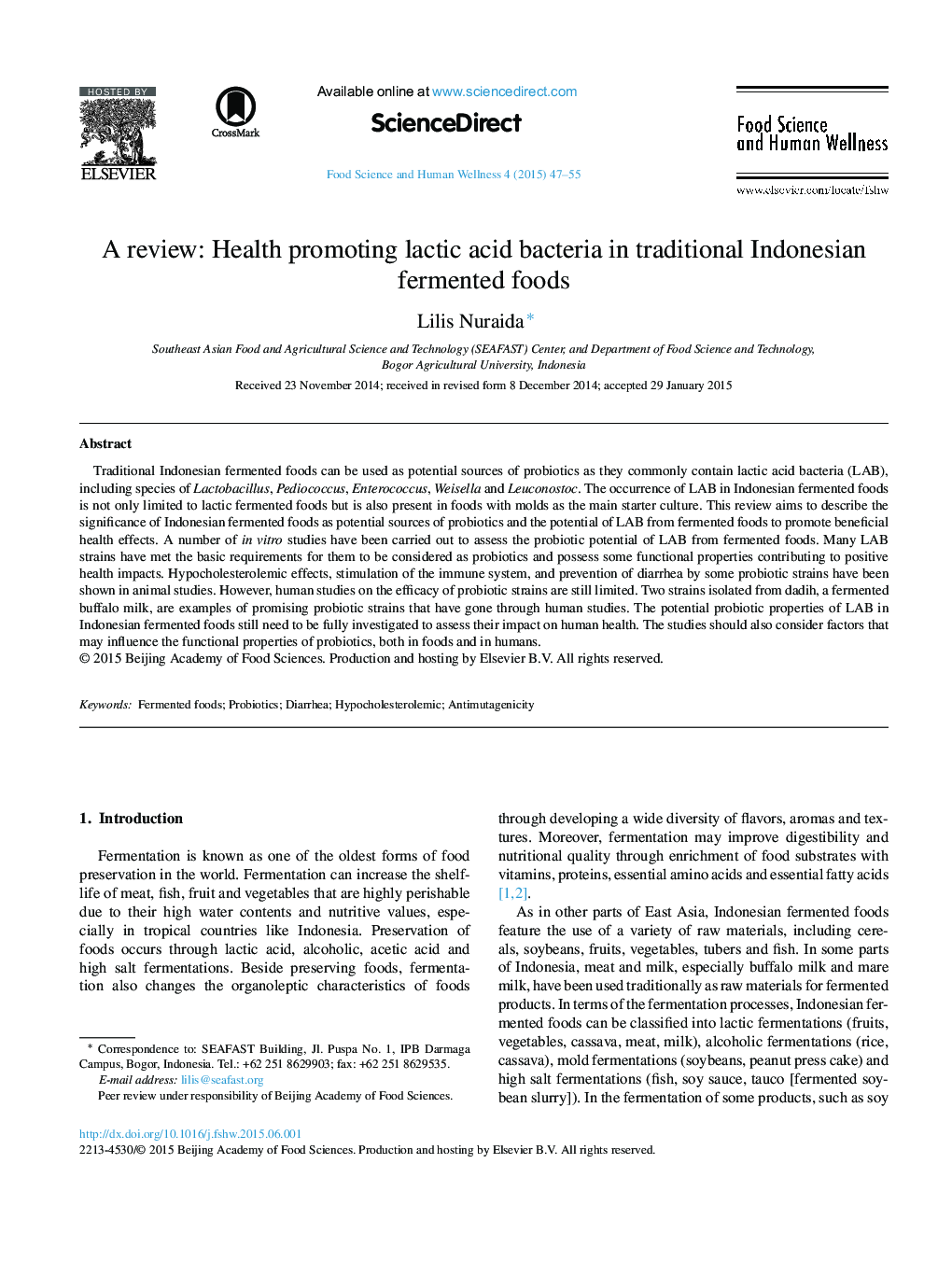| کد مقاله | کد نشریه | سال انتشار | مقاله انگلیسی | نسخه تمام متن |
|---|---|---|---|---|
| 2692691 | 1143444 | 2015 | 9 صفحه PDF | دانلود رایگان |
Traditional Indonesian fermented foods can be used as potential sources of probiotics as they commonly contain lactic acid bacteria (LAB), including species of Lactobacillus, Pediococcus, Enterococcus, Weisella and Leuconostoc. The occurrence of LAB in Indonesian fermented foods is not only limited to lactic fermented foods but is also present in foods with molds as the main starter culture. This review aims to describe the significance of Indonesian fermented foods as potential sources of probiotics and the potential of LAB from fermented foods to promote beneficial health effects. A number of in vitro studies have been carried out to assess the probiotic potential of LAB from fermented foods. Many LAB strains have met the basic requirements for them to be considered as probiotics and possess some functional properties contributing to positive health impacts. Hypocholesterolemic effects, stimulation of the immune system, and prevention of diarrhea by some probiotic strains have been shown in animal studies. However, human studies on the efficacy of probiotic strains are still limited. Two strains isolated from dadih, a fermented buffalo milk, are examples of promising probiotic strains that have gone through human studies. The potential probiotic properties of LAB in Indonesian fermented foods still need to be fully investigated to assess their impact on human health. The studies should also consider factors that may influence the functional properties of probiotics, both in foods and in humans.
Journal: Food Science and Human Wellness - Volume 4, Issue 2, June 2015, Pages 47–55
